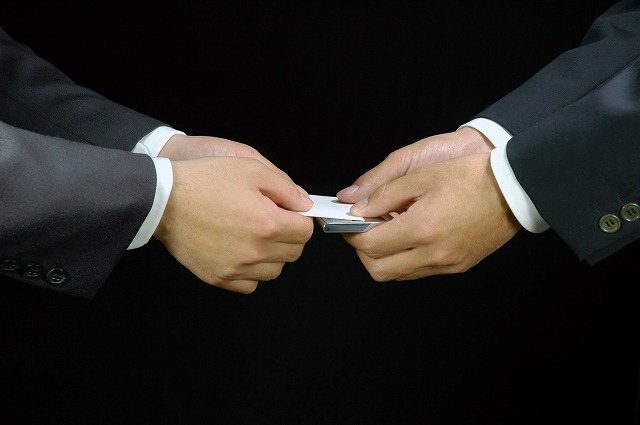What Does Your Business Card Really Say?
 It’s been a long time coming. Me getting back on a regular reading regimen that is. But I am proud to say, I’m back on the bandwagon. After debating between The Girl with the Dragon Tattoo or cracking open at least a Harry Potter book (do I share the distinction of having never read any of the books in the series, or am I the loneliest number?). Well, I ultimately went a completely different direction.
It’s been a long time coming. Me getting back on a regular reading regimen that is. But I am proud to say, I’m back on the bandwagon. After debating between The Girl with the Dragon Tattoo or cracking open at least a Harry Potter book (do I share the distinction of having never read any of the books in the series, or am I the loneliest number?). Well, I ultimately went a completely different direction.
The winner in the what-to-read debate ended up being “It’s Not Just Who You Know,” a book on relationship building and its applications to the business world by Tommy Spaulding, president of Spaulding Companies LLC and former CEO of Up with People. And by read, I mean I devoured it. Cover to cover; the accolades, the forward, and even the acknowledgement (which is a fun thing to do for any book, if you’re like me and enjoying reading the obscure things authors include).
The timing could not have been better as it came on the heels of a professional development session I attended about networking by Darryl Salerno, founder of Second Quadrant Solutions. Both Spaulding and Salerno advocate for approaching networking opportunities with the mindset of, “How can I help?” over “What can I get out of this?” This doesn’t mean that there’s never anything you receive in return. In fact, according to Spaulding, the “Return on Relationships” means eventually, the favor will be returned, even if it’s not apparent on the surface level.
As it turns out, my mission to return to reading for pleasure has spurred a self-evaluation on my personal worth. If you are interested in some soul searching for yourself, here’s the background catalyst. As described by Spaulding, in Asian cultures, the exchange of business cards is more like a cultural ritual. In Japan for example, a business card literally translates to mean “face card”—a representation of the person extending it. A sign of great mutual respect, it is a coveted honor to receive one. One receives a business card with two hands and bows as they do so. You never write on the card and you never put it away in front of the person who gave it you. While balancing business cards along with a drink and appetizer at networking events is certainly tougher than stuffing the business cards you collect into your pocket, there’s something to be said for this sign of respect. ![]()
If you’ve seen the movie Avatar, you can look at the meaning behind this cultural definition of exchanging “face cards” as the equivalent to the Na'vi expression, “I see you.” More than a greeting or a throw away “how-are-you,” “I see you” is used in the movie to recognize what a person stands for, intrinsically. How does a business card really represent something that personal, or that valuable? It’s just the correct spelling of someone’s name and title, right? Well, if you approach the exchange of that piece of cardboard as an opportunity to engage in a more meaningful dialog, opening up and listening to your counterpart, you’ll find that you will learn a lot more about what they believe in, what their passion is and who they care about. And really, what could be more powerful than that?
So the next time you’re in a networking situation, don’t be afraid to step outside the business jargon and find commonalities that will hopefully strengthen your relationship. Make a concerted effort to “see” them. You’ll build more relationships and solidify existing ones, trust me. And don’t be afraid to take stock (literally) in your intrinsic value; your knowledge and your passions, and be as generous with them as your time allows you to be. If you understand what you can bring to the table and your own “value,” you can define yourself as a resource, an advocate, a reference, a connector, and ultimately, a person who affects positive change. Yes, one business card exchange at a time. ![]()
